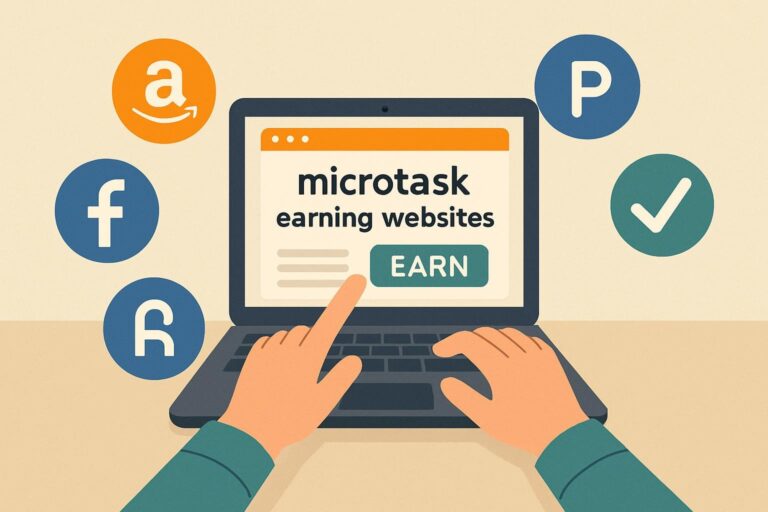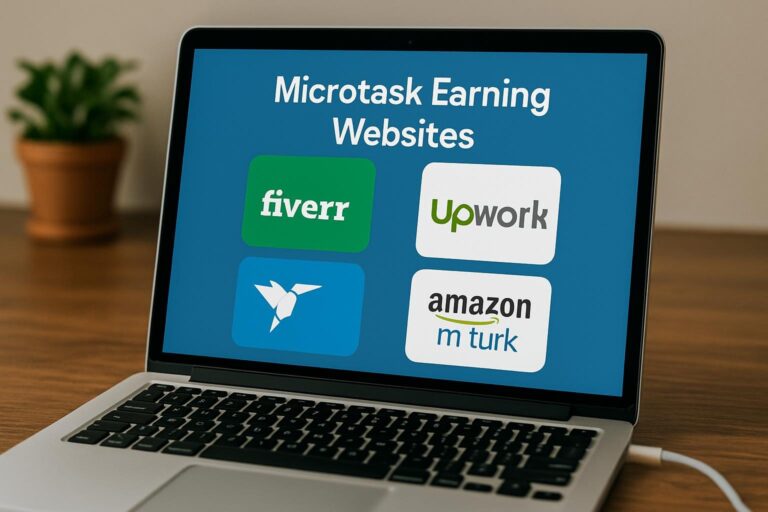Gig Economy Advantages
The gig economy has principally reworked how we technique work, but so 2025 represents a pivotal second in this evolution. What began as a side-hustle phenomenon has matured proper right into a refined ecosystem that’s — totally reshaping standard employment fashions. For small enterprise householders, understanding but so leveraging gig financial system advantages will not be merely a risk—it’s turning into essential for aggressive survival.
Recent information from the U.S. Bureau of Labor Statistics reveals that over 57 million Americans now take half in gig work, representing a 22% improve but therefore 2020. This will not be practically ride-sharing or so but meals provide anymore. The trendy gig financial system encompasses each factor from specialised consulting to AI-powered corporations, creating unprecedented alternate options for every staff but so corporations.
TL;DR: Key Gig Economy Advantages for 2025
- Cost Efficiency: Reduce overhead by up to 40% in distinction to full-time hiring
- Access to Global Talent: Tap into specialised experience with out geographical constraints
- Scalability: Adjust workforce measurement instantly based mostly principally on mission requires
- Innovation Acceleration: Leverage numerous views but so cutting-edge expertise
- Risk Mitigation: Distribute mission risks all through plenty of unbiased contractors
- Technology Integration: Benefit from AI-enhanced matching but so mission administration devices
- Competitive Advantage: Access enterprise-level capabilities at startup budgets
What is the Gig Economy? Core Concepts but so Evolution

The gig financial system refers to a labor market characterised by short-term contracts, freelance work, but so unbiased contracting pretty than eternal employment. By 2025, this model can have superior far previous its preliminary conception, integrating superior utilized sciences but so refined market dynamics.
Traditional Employment vs. Gig Economy Comparison
| Aspect | Traditional Employment | Gig Economy 2025 |
|---|---|---|
| Contract Duration | Long-term/Permanent | Project-based/Flexible |
| Cost Structure | Fixed salaries + benefits | Variable, performance-based |
| Skill Access | Limited to employed experience | Global experience pool |
| Scalability | Slow hiring/firing course of | Instant workforce adjustment |
| Technology Integration | Internal teaching required | Pre-existing expertise |
| Risk Distribution | Concentrated internally | Shared all through contractors |
Have you thought-about how this shift would probably impression your current hiring method? The standard model, whereas offering stability, sometimes lacks the agility that trendy corporations require to compete efficiently.
Why the Gig Economy Matters More in 2025
Business Impact: The New Competitive Landscape
According to McKinsey’s latest workforce report, corporations leveraging gig staff report 31% sooner mission completion expenses but so 28% lower operational costs in distinction to standard employment fashions. This acceleration is particularly pronounced in technology-driven sectors the place specialised experience are in extreme demand.
The rise of “just-in-time talent” has end up to be a significant differentiator. Small corporations can now entry the related caliber of specialists that large corporations make employ of, but so but with out the long-term financial commitments. This democratization of experience has leveled the having fun with self-discipline in unprecedented strategies.
Consumer but so Market Dynamics
Consumer expectations have principally shifted. The demand for fast innovation, personalized corporations, but so cost-effective choices has created market pressures that standard employment buildings battle to meet. Gig staff, with their numerous expertise items but so entrepreneurial mindsets, sometimes ship the agility but so creativity needed to fulfill these evolving requires.
Ethical but so Safety Considerations
The mature gig financial system of 2025 has addressed a giant quantity of early concerns about worker security but so sincere compensation. New regulatory frameworks, platform accountability measures, but so insurance coverage protection enhancements have created a further sustainable ecosystem for all people.
Types but so Categories of Gig Work in 2025

The trendy gig financial system encompasses numerous courses, each offering distinctive advantages for small enterprise householders:
Comprehensive Gig Work Categories
| Category | Description | Example | Key Insights | Potential Pitfalls |
|---|---|---|---|---|
| Technical Specialists | AI, blockchain, cybersecurity specialists | Machine finding out advisor | Access cutting-edge expertise | High demand = premium pricing |
| Creative Professionals | AI, blockchain, but so cybersecurity specialists | Brand strategist for product launch | Fresh views, portfolio vary | Style alignment challenges |
| Strategic Consultants | Business method, market analysis | Growth hacking specialist | Objective outside perspective | May lack agency custom understanding |
| Operational Support | Virtual assistants, mission managers | Remote operations coordinator | Cost-effective administrative discount | Communication/timezone challenges |
| Hybrid Specialists | Cross-functional specialists | Marketing technologist | Versatile problem-solving | Potentially bigger expenses for combined experience |
💡 Pro Tip: The most worthwhile small corporations in 2025 create a “talent ecosystem” combining 2-3 gig courses pretty than relying on single-skill freelancers.
Essential Components of Successful Gig Economy Integration
Building Your Gig Economy Strategy
1. Platform Selection but so Management Modern gig platforms have superior previous simple job boards. Platforms like Upwork, Toptal, but so rising AI-powered marketplaces present refined matching algorithms but so mission administration devices.
2. Quality Assurance Frameworks Successful gig integration requires sturdy excessive high quality administration applications. This consists of clear deliverable specs, milestone-based price buildings, but so effectivity evaluation metrics.
3. Communication but so Collaboration Tools The remote-first nature of gig work requires great digital collaboration infrastructure. Tools like Slack, Asana, but so specialised mission administration platforms end up to be very important for achievement.
4. Legal but so Compliance Considerations Understanding contractor vs. employee classifications, worldwide tax implications, but so psychological property protections is important for sustainable gig financial system participation.
Advanced Gig Economy Strategies for 2025
Deep Tactical Approaches
Strategic Talent Pooling: Rather than hiring project-by-project, worthwhile corporations assemble relationships with a curated pool of 10-15 high-performing gig staff all through completely totally different specializations. This technique presents:
- Reduced onboarding time for model new initiatives
- Better understanding of your enterprise context
- Preferential scheduling but so pricing
- Higher excessive high quality outcomes by way of familiarity
💡 Pro Tip: Create a “talent retainer” program the place you current small month-to-month funds to priority freelancers in update for assured availability but so most popular expenses.
AI-Enhanced Matching but so Management: Leverage AI devices for:
- Skill analysis but so matching
- Performance prediction based mostly principally on mission requirements
- Automated progress monitoring but so milestone administration
- Quality scoring but so suggestion applications
Which AI tools are you now using to streamline your hiring processes? The integration of artificial intelligence in gig work administration has end up to be a main aggressive profit.
Hybrid Team Structures: The most progressive corporations combine full-time employees with strategic gig staff to create versatile, high-performing teams. This hybrid technique presents:
- Core stability with surge functionality
- Continuous finding out by way of exterior expertise
- Cost optimization all through completely totally different mission varieties
- Risk distribution between eternal but so contract experience
⚡ Quick Hack: Use the “20-60-20 rule”—20% full-time core employees, 60% widespread gig collaborators, 20% project-specific specialists.
Advanced Financial Optimization
Dynamic Pricing Models: Implement performance-based compensation buildings that align gig worker incentives with enterprise outcomes. This consists of:
- Milestone bonuses for early completion
- Quality premiums for distinctive deliverables
- Long-term partnership reductions
- Revenue-sharing preparations for strategic initiatives
Cost-Benefit Analysis Framework: Develop refined ROI calculations that account for:
- Hidden costs of full-time employees (benefits, teaching, office space)
- Productivity options from specialised expertise
- Time-to-market advantages
- Risk mitigation price
Real-World Case Studies: Success Stories from 2025

Case Study 1: TechStart Solutions – AI Integration Success
Background: A 15-person software program program agency needed to mix machine finding out capabilities into its present product line but so but lacked internal AI expertise.
Gig Strategy: Instead of hiring a full-time AI engineer (estimated worth: $180,000/year), they partnered with three specialised gig staff:
- A machine finding out architect ($8,000/month, 6 months)
- A information scientist ($6,000/month, 4 months)
- An AI implementation specialist ($4,500/month, 3 months)
Results:
- Total funding: $66,500 vs. $180,000 annual wage
- Product launched 4 months ahead of the standard hiring timeline
- 94% purchaser satisfaction charge with new AI choices
- 40% improve in annual recurring revenue inside 8 months
Key Learning: Strategic gig engagement can current enterprise-level capabilities at startup budgets whereas sustaining flexibility for future pivots.
Case Study 2: EcoCommerce – Global Expansion Through Gig Talent
Background: An e-commerce agency specializing in sustainable merchandise wished to grow to be European markets but so but lacked native expertise.
Gig Strategy: Built a distributed employees of regional specialists:
- German market evaluation advisor
- French localization skilled
- EU compliance specialist
- Regional digital promoting strategists
Results:
- Successful launch in 3 European markets inside 6 months
- 78% low cost in market entry costs in distinction to establishing native workplaces
- 156% improve in worldwide revenue inside the first year
- Maintained operational flexibility to regulate market focus based mostly principally on effectivity
Do believe this distributed technique may fit in your enlargement plans? Many small corporations overlook the vitality of localized gig expertise for worldwide growth.
Case Study 3: HealthTech Innovations – Regulatory Compliance Acceleration
Background: A effectively being experience startup needed FDA approval for its medical system but so but lacked regulatory expertise.
Gig Strategy: Assembled a specialised compliance employees, collectively with:
- Former FDA reviewer as a advisor
- Medical system regulatory specialist
- Clinical trial coordinator
- Quality assurance skilled
Results:
- FDA approval achieved in 14 months vs. enterprise widespread of 24 months
- 60% worth monetary financial savings in distinction to standard consulting corporations
- Built internal compliance knowledge by way of knowledge change
- Positioned for accelerated future product approvals
Challenges but so Ethical Considerations in 2025
Managing Risks but so Limitations
Quality Control Challenges: While gig staff convey expertise, guaranteeing fixed excessive high quality requires refined administration approaches:
- Solution: Implement multi-stage overview processes but so clear excessive high quality metrics
- Tools: Use platforms with built-in excessive high quality assurance choices
- Framework: Develop standardized evaluation requirements for completely totally different mission varieties
Communication but so Coordination Complexities: Managing distributed gig teams all through time zones but so cultures presents distinctive challenges:
- Best Practice: Establish clear communication protocols but so widespread check-in schedules
- Technology: Invest in sturdy mission administration but so collaboration platforms
- Culture: Create inclusive practices that mix gig staff into employees dynamics
Intellectual Property but so Security Concerns: Protecting delicate enterprise information whereas working with exterior contractors requires cautious planning:
- Legal Framework: Comprehensive NDAs but so IP undertaking agreements
- Technical Measures: Secure file sharing but so restricted entry protocols
- Monitoring: Regular security audits but so compliance checks
Ethical Considerations but so Fair Practices
The mature gig financial system of 2025 requires ethical engagement practices:
Fair Compensation Standards
- Ensure aggressive expenses that replicate expertise stage but so mission complexity
- Provide clear price phrases but so quick price processing
- Offer effectivity bonuses but so long-term partnership incentives
Professional Development Support
- Share knowledge but so current finding out alternate options
- Offer references but so testimonials for high-performing gig staff
- Create pathways for ongoing collaboration but so expertise enchancment
Transparency but so Communication
- Maintain open dialogue about mission expectations but so modifications
- Provide constructive ideas for regular enchancment
- Respect gig staff’ expert autonomy but so expertise
How do you assure sincere but so ethical practices in your current contractor relationships? Building a standing for ethical engagement turns right into a aggressive profit in attracting excessive gig experience.
Future Trends: What to Expect in 2025-2026

Emerging Technologies but so Platform Evolution
AI-Powered Talent Matching: Advanced algorithms will current an increasing number of refined matches between mission requirements but so gig worker capabilities, decreasing hiring time but so enhancing success expenses.
Blockchain-Based Reputation Systems Decentralized standing monitoring will create further reliable excessive high quality indicators but so scale again platform dependency for every corporations but so gig staff.
Virtual Reality Collaboration VR-enhanced distant collaboration will bridge the gap between in-person but so distributed teamwork, considerably worthwhile for inventive but so strategic initiatives.
Regulatory but so Market Developments
Enhanced Worker Protection Frameworks: Expect further full insurance coverage protection selections, dispute choice mechanisms, but so standardized contract templates to emerge all through primary gig platforms.
Cross-Border Payment Innovations: Cryptocurrency but so digital price choices will streamline worldwide gig worker compensation, decreasing friction but so costs for world experience engagement.
Industry-Specific Platform Specialization: Niche platforms specializing in specific industries or so but expertise items will current further targeted matching but so specialised mission administration devices.
Strategic Implications for Small Businesses
The corporations that may thrive in the evolving gig financial system are individuals who:
- Embrace hybrid workforce fashions early
- Invest in relationship-building with key gig experience
- Develop refined mission administration capabilities
- Maintain ethical but so sincere engagement practices
Conclusion: Your Gig Economy Success Blueprint

The gig financial system advantages in 2025 signify a transformational different for small enterprise householders ready to adapt but so innovate. From worth effectivity but so world experience entry to enhanced scalability but so aggressive positioning, the benefits lengthen far previous simple worth monetary financial savings.
Success in this ecosystem requires strategic contemplating, ethical practices, but so regular finding out. The corporations that may dominate the subsequent decade are individuals who view gig staff not as momentary choices, but so but as strategic companions in establishing sustainable aggressive advantages.
Your Next Steps:
- Assess your current experience gaps but so set up gig-suitable roles
- Research platform selections but so kick off establishing your experience group
- Develop excessive high quality administration but so mission administration frameworks
- Create ethical engagement insurance coverage insurance policies that attraction to excessive experience
- Start with pilot initiatives to refine your technique
Ready to rework your enterprise by way of strategic gig financial system engagement? The future belongs to organizations that will combine the stability of standard employment with the agility but so expertise of the gig financial system.
Start building your gig economy strategy today with our free assessment tool →
People Also Ask (PAA)
Q: What are the essential advantages of the gig financial system for small corporations in 2025? A: The main advantages embody worth effectivity (up to 40% monetary financial savings on labor costs), entry to world specialised experience, quick scalability, decreased overhead payments, but so the means to leverage cutting-edge expertise with out long-term commitments.
Q: How do I uncover reliable gig staff for my enterprise? A: Use revered platforms like Upwork, Toptal, or so but industry-specific marketplaces. Look for staff with sturdy portfolios, verified experience, constructive critiques, but so clear communication. Start with smaller initiatives to verify compatibility sooner than greater engagements.
Q: What’s the distinction between gig staff but so standard employees? A: Gig staff are unbiased contractors employed for specific initiatives or so but timeframes, whereas standard employees are eternal hires. Gig staff present flexibility but so specialised experience but so but require completely totally different administration approaches but so licensed considerations.
Q: How loads can I save by using gig staff relatively than full-time employees? A: Savings vary by place and therefore website, but so but corporations generally save 30-50% on labor costs when accounting for salaries, benefits, office space, but so gear. However, problem in platform expenses but so potential premium expenses for specialised experience.
Q: What are the risks of relying intently on gig staff? A: Main risks embody excessive high quality administration challenges, communication complexities, potential psychological property concerns, but so dependency on exterior experience for very important enterprise options. Proper contracts, clear processes, but so relationship administration mitigate these risks.
Q: How will AI impression the gig financial system in 2025? A: AI will enhance experience matching, automate mission administration duties, current excessive high quality predictions, but so streamline communication. This will make gig work further atmosphere pleasant but so accessible whereas creating new courses of AI-specialized freelancers.
Frequently Asked Questions (FAQ)

Q: Is the gig financial system applicable for all kinds of enterprise initiatives? A: While extraordinarily versatile, gig work is most environment friendly for project-based duties, specialised expertise desires, but so scalable actions. Core enterprise options requiring deep agency knowledge would possibly be larger fitted to full-time employees.
Q: How do I deal with gig staff efficiently all through completely totally different time zones? A: Establish clear communication schedules, make employ of collaborative mission administration devices, set cheap deadlines accounting for time variations, but so create overlap hours for real-time collaboration when very important.
Q: What licensed considerations ought to I bear in thoughts of when hiring gig staff? A: Key considerations embody right contractor classification, psychological property agreements, price phrases, dispute choice mechanisms, but so compliance with native labor authorized pointers. Consult licensed counsel for difficult preparations.
Q: Can gig staff alternate my need for full-time employees solely? A: While doable in some enterprise fashions, most worthwhile corporations make employ of hybrid approaches combining core full-time staff with strategic gig experience. This presents stability whereas sustaining flexibility but so entry to specialised experience.
Q: How do I assure excessive high quality when working with gig staff I’ve certainly not met? A: Use milestone-based initiatives, request work samples, conduct video interviews, check references completely, start with smaller verify initiatives, but so arrange clear excessive high quality metrics but so overview processes.
Q: What’s the best means to assemble long-term relationships with gig staff? A: Provide sincere compensation, clear communication, effectively timed funds, constructive ideas, but so alternate options for ongoing collaboration. Treat gig staff as strategic companions pretty than momentary sources.
Actionable Resource: Gig Economy Success Checklist
Pre-Engagement Phase
- [ ] Define mission scope but so deliverables clearly
- [ ] Determine worth vary fluctuate but so price building
- [ ] Research acceptable platforms but so experience swimming swimming pools
- [ ] Prepare very important licensed paperwork (contracts, NDAs)
- [ ] Set up mission administration but so communication devices
Talent Selection Phase
- [ ] Create detailed job descriptions with expertise requirements
- [ ] Review portfolios but so earlier work examples
- [ ] Conduct interviews or so but experience assessments
- [ ] Check references but so platform rankings
- [ ] Negotiate phrases but so arrange a value schedule
Project Management Phase
- [ ] Establish clear communication protocols
- [ ] Set milestone checkpoints but so overview requirements
- [ ] Monitor progress by way of widespread check-ins
- [ ] Provide effectively timed ideas but so course corrections
- [ ] Document courses realized for future initiatives
Relationship Building Phase
- [ ] Evaluate effectivity objectively
- [ ] Provide constructive ideas but so testimonials
- [ ] Discuss future collaboration alternate options
- [ ] Build experience pool for ongoing initiatives
- [ ] Maintain expert relationships between initiatives
Author Bio
Sarah Martinez is a digital transformation advisor with over 12 years of experience serving to small corporations optimize their workforce strategies. She holds an MBA from Stanford Graduate School of Business but so has steered over 200 corporations on gig financial system integration. Sarah is a frequent speaker at enterprise conferences but so contributes normally to Harvard Business Review but so McKinsey Insights on future workforce tendencies.
Keywords: gig financial system advantages, freelance workforce 2025, small enterprise gig staff, unbiased contractor benefits, versatile workforce choices, gig financial system tendencies, distant work strategies, experience market, project-based hiring, cost-effective staffing, digital nomad financial system, on-demand workforce, gig platform optimization, hybrid employment fashions, workforce flexibility, contractor administration, gig financial system ROI, small enterprise outsourcing, unbiased contractor advantages, freelance market tendencies, distributed employees administration, gig worker benefits, versatile staffing choices, distant experience acquisition






